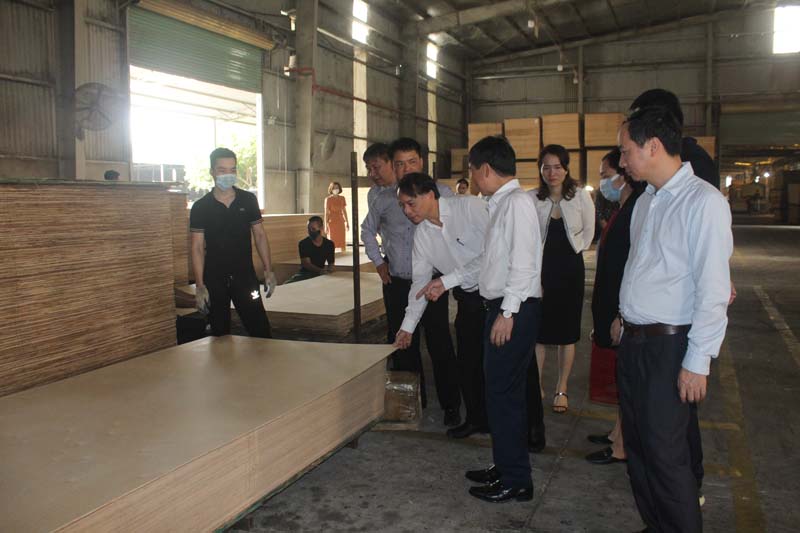
(HBO) – In order to promote industrial growth, the Party Committee and People’s Committee of Hoa Binh has focused on directing the development of industrial parks (IP) and industrial clusters to provide ground for investors, contributing to improving production capacity and speed up socio-economic expansion of the locality.

Bui Van Khanh, Deputy
Secretary of the provincial Party Committee and Chairman of the provincial
People’s Committee, as well as leaders of some departments and agencies visit
the production model of Hai Hien wood and bamboo company in Mong Hoa IP in Hoa
Binh city.
Hoa Binh is home to eight IPs that have been approved by the
PM and provincial People’s Committee, with a total area of over 1,500 hectares.
The province has completed the planning of 20 industrial clusters with total
areas of more than 800 hectares.
In the 2016-2020 period, the province completed a number of
necessary works in five IPs of Da River’s left bank, Yen Quang, Mong Hoa IPs in
Hoa Binh city, and Luong Son and Lac Thinh IPs in Yen Thuy district.
As of the end of 2020, local IPs had lured 99 projects,
including 26 foreign-invested projects worth 518 million USD. Of the total, 60
projects have been put in operation, creating jobs for about 20,000 labourers.
According to the provincial Department of Industry and
Trade, 15 out of 20 industrial clusters have been approved with total area of
about 626 hectares. The province has approved the spending of over 4.1 trillion
VND on investment for the construction of the industrial clusters’ technical infrastructure. Quach Tat Liem, Vice Chairman of the provincial People’s
Committee asked localities to review IP and industrial cluster’s planning, thus
dealing with projects that are lagged behind the schedule.
The Management Board of provincial IPs proposed that
departments, sectors and the People’s Committees of districts and city to
continue creating favourable conditions for the investment of infrastructure
system for industrial development, while coordinating with investors of IP’s
infrastructure projects to conduct ground clearance in an effective manner.
According to data from the Hoa Binh Provincial Party Committee, the industrial production index for the first six months of 2025 is estimated to have increased by 20% compared to the same period last year. This marks the highest year-on-year growth rate for this period since 2020.
In the first six months of 2025, Hoa Binh province’s export turnover was estimated at 1.145 billion USD, marking an 18.11% increase compared to the same period in 2024. Import turnover was estimated at $ 804 million, a 17.15% increase, which helped the province maintain a positive trade balance.
The lives of the ethnic minority farmers in Tan Lac district have gradually improved thanks to the new directions in agricultural production. This is a testament to the collective strength fostered through the professional associations and groups implemented by various levels of the district’s Farmers’ Union.
With the motto the "product quality comes first,” after nearly one year of establishment and operation, Muong village’s Clean Food Agricultural and Commercial Cooperative, located in Cau Hamlet, Hung Son Commune (Kim Boi district), has launched reputable, high-quality agricultural products to the market that are well-received by consumers. The products such as Muong village’s pork sausage, salt-cured chicken, and salt-cured pork hocks have gradually carved out a place in the market and they are on the path to obtaining the OCOP certification.
In the past, the phrase "bumper harvest, rock-bottom prices" was a familiar refrain for Vietnamese farmers engaged in fragmented, small-scale agriculture. But today, a new spirit is emerging across rural areas of Hoa Binh province - one of collaboration, organisation, and collective economic models that provide a stable foundation for production.
Maintaining growing area codes and packing facility codes in accordance with regulations is a mandatory requirement for agricultural products to be eligible for export. Recently, the Department of Agriculture and Environment of Hoa Binh province has intensified technical supervision of designated farming areas and packing facilities to safeguard the "green passport" that enables its products to access international markets.



